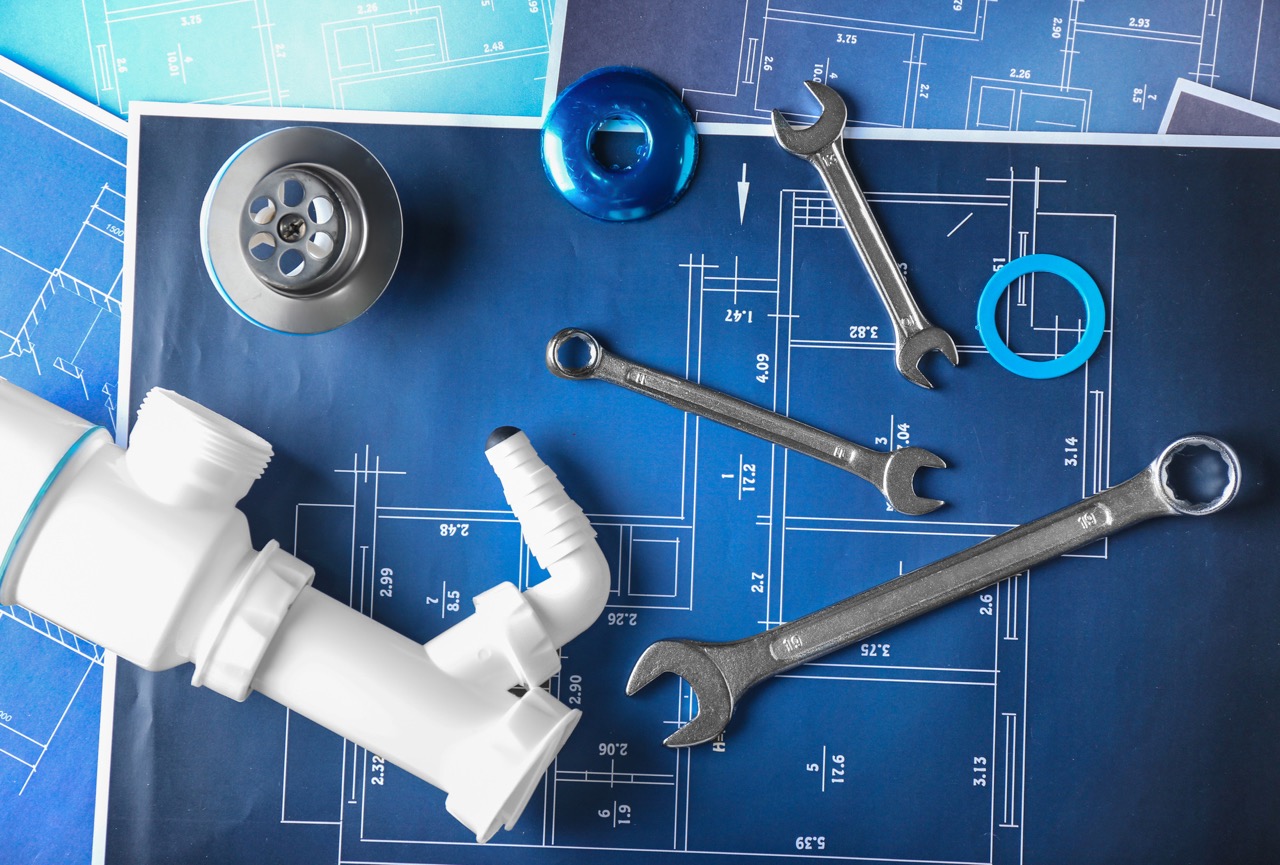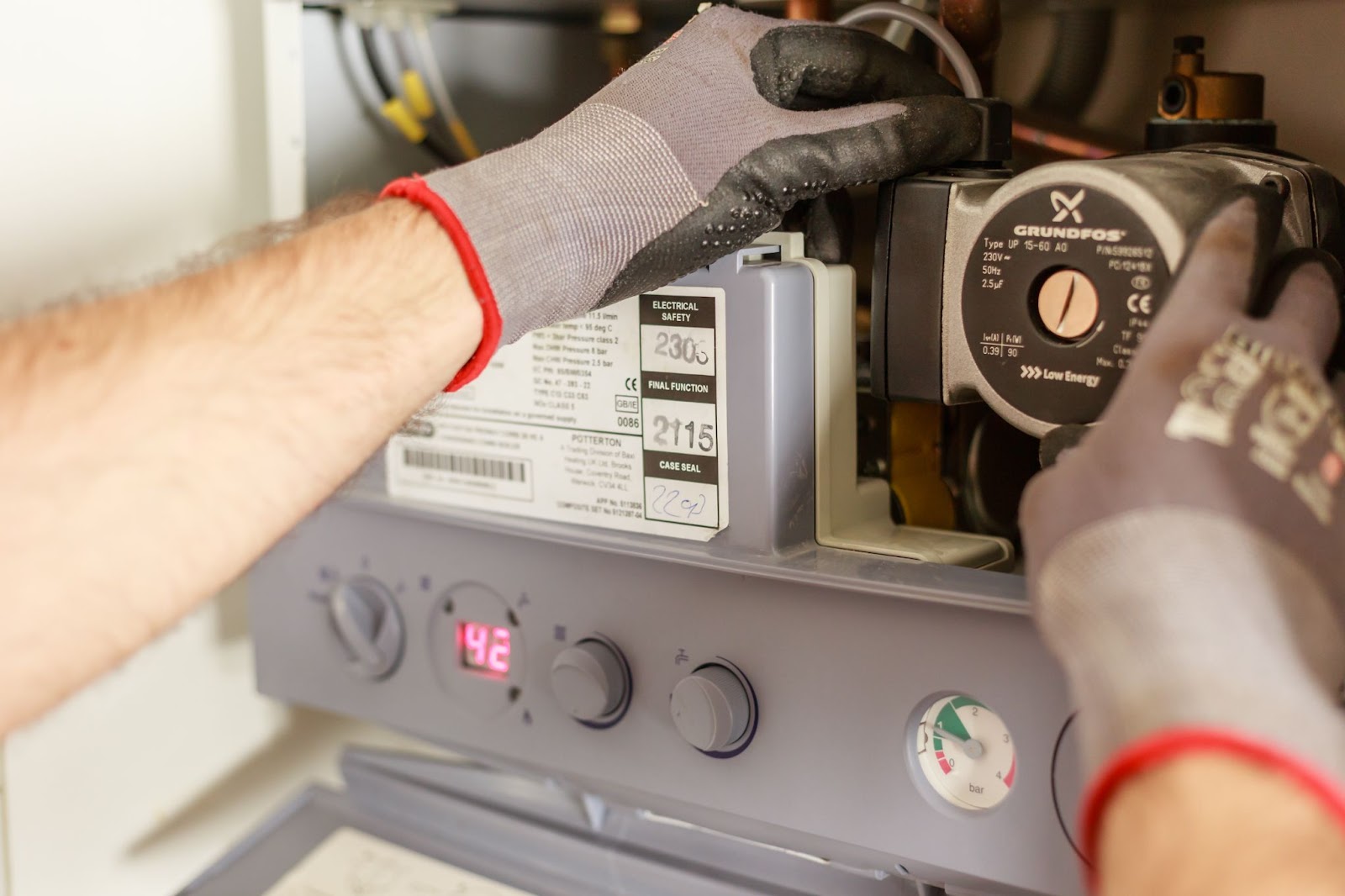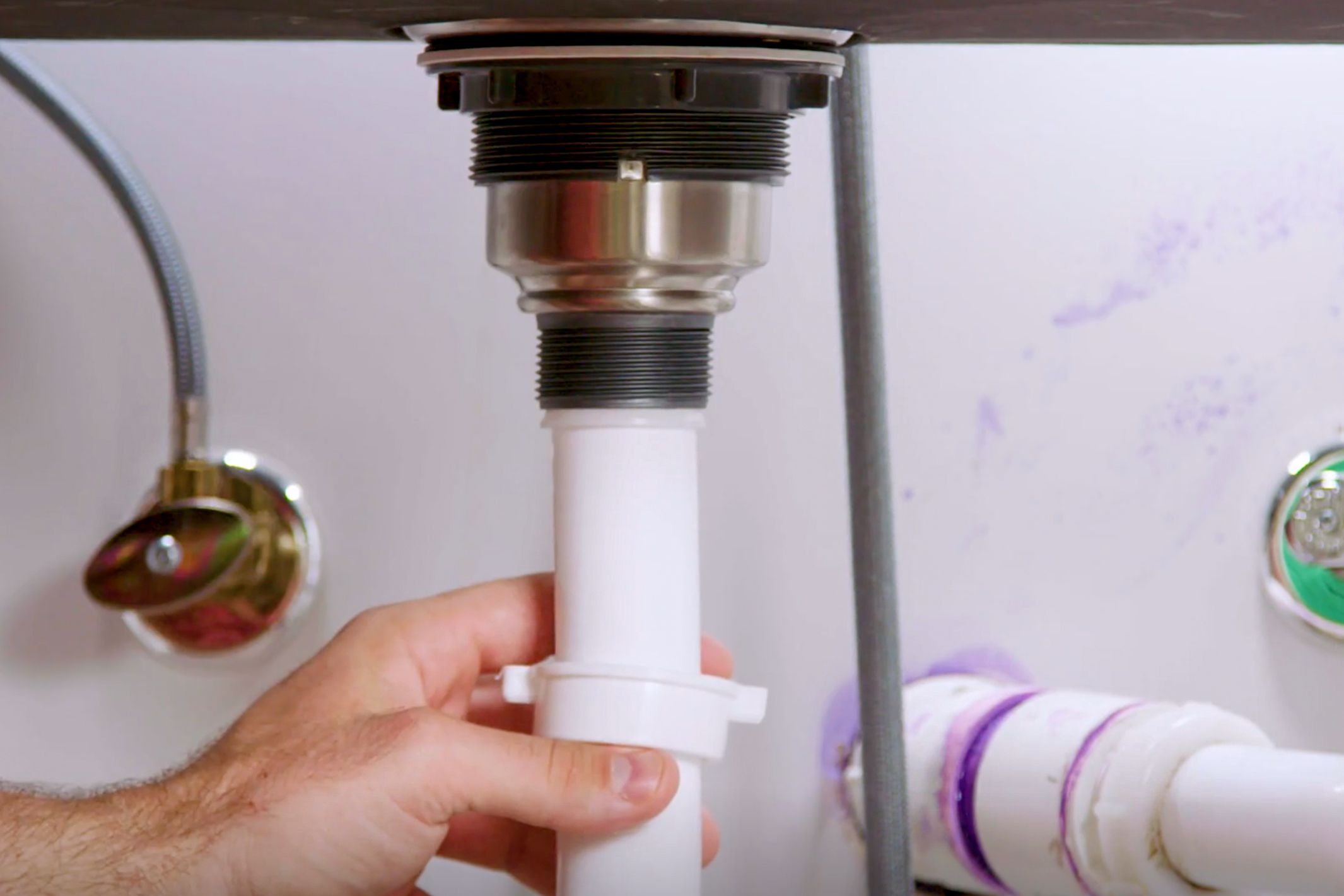

Articles
How To Market My Plumbing Business
Modified: January 5, 2024
Learn effective strategies and tips for marketing your plumbing business with our informative articles. Stay ahead of the competition and attract more customers.
(Many of the links in this article redirect to a specific reviewed product. Your purchase of these products through affiliate links helps to generate commission for Storables.com, at no extra cost. Learn more)
Introduction
Welcome to the world of plumbing business marketing! As a plumbing business owner, you understand the importance of attracting new customers and retaining existing ones. In today’s digital age, having a strong online presence is essential for any business to thrive. This includes implementing effective marketing strategies to reach your target audience and stand out from the competition.
In this article, we will explore various ways to market your plumbing business, both online and offline. From building a comprehensive marketing plan to leveraging social media and optimizing your website for search engines, we will cover strategies that will help you reach and connect with potential customers in your local area.
Marketing your plumbing business can seem overwhelming, but with a well-thought-out plan and the right tools, you can effectively promote your services and grow your customer base. So, let’s dive in and discover how to market your plumbing business successfully!
Key Takeaways:
- Build a strong online presence by optimizing your website, leveraging social media, and creating engaging content to increase visibility and attract more customers to your plumbing business.
- Tailor your marketing efforts by identifying your target audience, harnessing the power of local SEO, generating positive online reviews, and engaging in local networking to build trust, credibility, and long-term success for your plumbing business.
Read more: How To Market A Home Inspection Business
Building a Strong Online Presence
In today’s digital world, having a strong online presence is crucial for businesses in all industries, including plumbing. Here are some key steps to consider when building a strong online presence for your plumbing business:
- Create a Professional Website: Your website serves as the online face of your plumbing business. Ensure that it is well-designed, user-friendly, and mobile responsive. Include information about your services, contact details, and customer testimonials to establish trust and credibility.
- Optimize Your Website for Search Engines: Implement search engine optimization (SEO) techniques to improve your website’s visibility in search engine results. Research and incorporate relevant keywords, optimize meta tags, and create compelling and informative content to attract organic traffic.
- Claim Your Business Listings: Register your plumbing business on popular online directories such as Google My Business, Yelp, and Yellow Pages. Ensure that your business information is accurate, up-to-date, and consistent across all platforms.
- Utilize Social Media Platforms: Establish a presence on social media platforms such as Facebook, Twitter, and Instagram. Share engaging content related to plumbing tips, projects, and customer success stories. Interact with your followers, respond to comments, and use social media as a platform to build relationships with your audience.
- Create Engaging Content: Develop a content marketing strategy to create valuable and informative content related to plumbing. This can include blog posts, videos, and infographics that educate and engage your target audience. Share this content on your website and social media platforms to attract and retain customers.
Building a strong online presence takes time and effort, but it is essential for promoting your plumbing business effectively. By following these steps, you can increase your visibility online, attract more customers, and establish yourself as a trusted authority in the plumbing industry.
Creating a Comprehensive Marketing Plan
When it comes to marketing your plumbing business, having a well-defined and comprehensive marketing plan is essential. A good marketing plan will outline your goals, target audience, strategies, and tactics to achieve your business objectives. Here are some key steps to consider when creating a comprehensive marketing plan:
- Set Clear Marketing Goals: Begin by clearly defining your marketing goals. Do you want to increase brand awareness, generate more leads, or promote a specific service? Set specific, measurable, achievable, relevant, and time-bound (SMART) goals to guide your marketing efforts.
- Identify Your Target Audience: Understanding your target audience is vital to crafting effective marketing messages. Identify your ideal customers’ demographics, interests, pain points, and buying behaviors. This will help you tailor your marketing strategies to reach and resonate with your target audience.
- Choose the Right Marketing Channels: Based on your target audience and marketing goals, choose the most appropriate marketing channels to reach and engage with your audience. This may include online platforms such as search engines, social media sites, email marketing, and offline methods such as local print advertisements or community events.
- Develop Compelling Messaging: Craft clear, concise, and compelling messaging that communicates the unique value and benefits of your plumbing services. Clearly articulate why customers should choose your business over competitors and how you can solve their plumbing problems effectively.
- Allocate a Marketing Budget: Determine a realistic marketing budget based on your business goals. Allocate funds to various marketing activities, such as website development, search engine optimization, advertising, and content creation. Continuously monitor and adjust your budget as needed based on performance and results.
- Monitor and Measure Results: Regularly track and measure the effectiveness of your marketing efforts. Set up analytics tools to monitor website traffic, lead generation, and conversion rates. Use this data to identify what is working well and what needs improvement, allowing you to make data-driven decisions to optimize your marketing campaigns.
By creating a comprehensive marketing plan, you can ensure that your marketing efforts are targeted, focused, and aligned with your business objectives. Regularly review and update your plan to adapt to changing market conditions and customer preferences, and you will be on your way to successfully promoting your plumbing business.
Identifying and Targeting Your Customer Base
One of the key factors for successful marketing is identifying and targeting the right customer base for your plumbing business. By understanding your ideal customers’ preferences, needs, and challenges, you can tailor your marketing efforts to effectively reach and resonate with them. Here are some steps to help you identify and target your customer base:
- Conduct Market Research: Start by conducting market research to gain insights into your target audience. Analyze demographics, psychographics, and behavior patterns of your existing customers and potential customers. This will help you determine who your ideal customers are and how to effectively market to them.
- Create Buyer Personas: Develop detailed buyer personas that represent your ideal customers. Consider factors such as age, gender, location, income, preferences, and pain points. Having a clear understanding of your buyer personas will guide your marketing strategies and messaging.
- Segment Your Audience: Once you have identified your target audience, segment them into specific groups based on their characteristics and behaviors. This segmentation allows you to personalize your marketing messages and offer tailored solutions to specific customer needs.
- Understand Customer Pain Points: Dive deeper into your customer base to identify their pain points and challenges related to plumbing. Understand the problems they face, whether it’s clogged drains, leaky pipes, or water heater issues. This knowledge will help you position your services as the solution to their problems.
- Research Competitors: Analyze your competitors’ marketing strategies and customer base. Look for gaps or underserved customer segments that you can target. Differentiate yourself by offering unique services, exceptional customer service, or competitive pricing to attract customers away from your competitors.
- Engage in Customer Feedback: Actively seek feedback from your customers to better understand their needs and preferences. Use surveys, reviews, and social media interactions to gather insights and continuously improve your services and marketing strategies.
By identifying and targeting your customer base, you can tailor your marketing messages, strategies, and tactics to effectively reach and engage with your ideal customers. This focused approach will result in higher conversion rates, increased customer satisfaction, and long-term business growth for your plumbing business.
Leveraging Social Media Marketing
In today’s digital age, social media has become a powerful tool for businesses to connect with their audience and promote their services. As a plumbing business owner, leveraging social media marketing can help you increase brand awareness, engage with potential customers, and drive traffic to your website. Here are some tips for effectively utilizing social media for your plumbing business:
- Choose the Right Platforms: Identify the social media platforms that align with your target audience. Facebook, Instagram, and LinkedIn are popular options for businesses. Focus your efforts on platforms where your customers are most active.
- Create a Consistent Brand Presence: Establish a cohesive brand presence across your social media platforms. Use consistent branding elements such as your logo, colors, and tone of voice. This helps in building brand recognition and trust among your audience.
- Share Engaging Content: Post relevant and valuable content that resonates with your audience. Provide helpful plumbing tips, tricks, and advice. You can also share before and after photos of projects, customer testimonials, and behind-the-scenes glimpses of your work. Engaging content encourages interaction and increases organic reach.
- Use Visuals: Incorporate eye-catching visuals such as images and videos in your social media posts. Visual content tends to grab attention and generate higher engagement rates. Share images of your work, testimonials with customer photos, and videos showcasing your expertise.
- Engage with Your Audience: Monitor your social media accounts regularly and respond to comments, messages, and reviews. Engage in conversations and provide helpful responses to customer inquiries. Building genuine relationships with your audience enhances trust and loyalty.
- Run Targeted Ads: Consider running targeted ads on social media platforms to reach a wider audience. Utilize the platform’s targeting tools to ensure your ads are shown to the most relevant users. Craft compelling ad copy and use visually appealing images or videos to capture attention.
- Collaborate with Influencers: Partner with social media influencers or local industry experts to expand your reach and credibility. Collaborating with influencers can help promote your services to their followers, providing valuable social proof and endorsements.
- Track and Analyze Metrics: Use social media analytics tools to track and analyze the performance of your social media efforts. Monitor metrics such as engagement rates, reach, and conversions. Adjust your strategy based on the data to improve your results over time.
Leveraging social media effectively can significantly boost your plumbing business’s visibility and connect you with a wider audience. By following these tips, you can create a strong social media presence that drives engagement, promotes your services, and increases your chances of converting followers into loyal customers.
Read more: How To Market Your Home Improvement Business
Optimizing Your Website for Search Engines
When it comes to marketing your plumbing business online, search engine optimization (SEO) is a crucial component. Optimizing your website for search engines improves its visibility and allows potential customers to find your services when searching for plumbing-related keywords. Here are some key steps to optimize your website for search engines:
- Keyword Research: Conduct thorough keyword research to identify the most relevant and high-performing keywords related to plumbing services. Utilize keyword research tools to find popular search terms and incorporate them naturally into your website’s content.
- On-Page Optimization: Optimize the on-page elements of your website. This includes optimizing page titles, meta descriptions, headers, and URLs with targeted keywords. Ensure that your content is well-structured, informative, and engaging for both users and search engines.
- Mobile Optimization: With the increasing use of mobile devices, it’s crucial to optimize your website for mobile users. Ensure that your website is mobile responsive, loads quickly, and provides a seamless user experience on all devices.
- Quality Content: Create high-quality and relevant content that appeals to both users and search engines. Develop informative blog posts, articles, and guides that address common plumbing issues and provide valuable solutions. Incorporate targeted keywords naturally throughout your content.
- Internal and External Linking: Use internal links to connect relevant pages within your website. This helps search engines understand the structure of your site and improves user navigation. Additionally, seek opportunities to acquire external links from reputable websites, as this can significantly boost your website’s authority and rankings.
- Website Speed: Optimize your website’s loading speed by compressing images, minifying CSS and JavaScript files, and utilizing caching techniques. A fast-loading website not only improves user experience but also positively impacts your search engine rankings.
- Schema Markup: Implement schema markup on your website to provide search engines with additional information about your business, such as your location, operating hours, and customer reviews. Schema markup enhances the visibility of your website in search engine results pages.
- Local SEO: As a plumbing business, targeting local customers is crucial. Optimize your website for local SEO by including your business name, address, and phone number (NAP) on every page. Claim and update your business listings on local directories and review platforms like Google My Business, Yelp, and Angie’s List.
Optimizing your website for search engines requires ongoing effort and continuous monitoring. Stay up-to-date with the latest SEO trends and algorithms to ensure that your website remains competitive in search engine rankings. By following these optimization practices, you will increase your website’s visibility, attract more organic traffic, and ultimately drive more leads for your plumbing business.
Implementing Pay-Per-Click Advertising
Pay-per-click (PPC) advertising is an effective digital marketing strategy that allows you to drive targeted traffic to your plumbing business website by paying for clicks on your ads. With PPC, you can reach potential customers who are actively searching for plumbing services. Here are some key steps to successfully implement PPC advertising:
- Set Clear Campaign Goals: Determine your objectives for the PPC campaign. Are you looking to increase website traffic, generate leads, or promote a specific service? Setting clear goals will help you structure your campaign effectively.
- Keyword Research: Conduct comprehensive keyword research to identify relevant and high-performing keywords for your PPC campaign. Use keyword research tools to find popular keywords related to plumbing services and incorporate them into your ad campaigns.
- Create Compelling Ad Copy: Craft engaging and compelling ad copy that grabs attention and encourages clicks. Highlight your unique selling points, such as fast service, competitive pricing, or exceptional customer satisfaction. Include a clear call-to-action to guide users to take the desired action.
- Target Specific Geographic Areas: Since your plumbing services are location-based, target specific geographic areas in your PPC campaigns. Set your ads to display only to users in your targeted service areas, ensuring that your budget is efficiently spent on reaching potential customers in your service radius.
- Bid Management: Set competitive bids for your targeted keywords to compete in the PPC auction. Regularly monitor and adjust your bids based on the performance of your ads and keyword competitiveness. This ensures that you are maximizing your ad visibility within your budget constraints.
- Ad Extensions: Utilize ad extensions to provide additional information and enhance the visibility of your ads. Include extensions like call extensions to add your phone number, location extensions to display your address, and sitelink extensions to direct users to specific landing pages on your website.
- Landing Page Optimization: Design and optimize landing pages specifically for your PPC campaigns. Ensure that each landing page aligns with the ad copy and provides a seamless user experience. Include clear and persuasive CTAs to encourage conversions.
- Track and Analyze Metrics: Implement conversion tracking to measure the effectiveness of your PPC campaigns. Monitor key metrics such as click-through rates (CTR), conversion rates, and return on ad spend (ROAS). Use these insights to refine your campaigns and improve performance over time.
Implementing PPC advertising requires careful planning, keyword research, and ongoing optimization. It can be a cost-effective way to drive targeted traffic and generate leads for your plumbing business. By following these steps and continuously monitoring and optimizing your campaigns, you can maximize the return on your investment and achieve your marketing goals.
Utilize social media platforms to showcase your expertise, share customer testimonials, and offer plumbing tips to engage with potential customers and build trust.
Utilizing Email Marketing Strategies
Email marketing is a powerful tool to engage with your audience, nurture relationships, and drive repeat business for your plumbing business. By implementing effective email marketing strategies, you can stay top of mind with your customers and prospects, promote your services, and generate leads. Here are some key steps to effectively utilize email marketing:
- Build an Opt-In Email List: Start by building a permission-based email list of customers and prospects who have opted in to receive communications from your plumbing business. Offer incentives, such as exclusive discounts or useful resources, to encourage sign-ups.
- Segment Your Email List: Segment your email list based on demographics, location, purchase history, and engagement levels. This will allow you to send targeted and personalized email campaigns that resonate with each segment of your audience.
- Create Compelling Email Content: Craft engaging and relevant content for your email campaigns. This can include newsletters, promotions, maintenance tips, project spotlights, and customer success stories. Provide valuable information that educates, entertains, and adds value to your subscribers’ lives.
- Automate Email Sequences: Set up email automation sequences to welcome new subscribers, follow up on inquiries, and nurture leads over time. By automating certain email workflows, you can save time and provide consistent and timely communication to your audience.
- Include Clear and Persuasive CTAs: Include clear call-to-action (CTA) buttons or links in your emails to guide subscribers to take the desired action. Whether it’s booking a plumbing service, downloading a resource, or contacting your business, make it easy for your audience to engage with you.
- Personalize Email Campaigns: Personalize your email campaigns by addressing subscribers by their names and tailoring the content to their specific interests and preferences. Personalization helps foster a sense of connection and encourages engagement with your emails.
- Monitor Email Metrics: Track key email metrics such as open rates, click-through rates, and conversion rates. Analyze the data to understand the effectiveness of your email campaigns. Continuously test different subject lines, content formats, and CTAs to improve your email performance.
- Comply with Email Regulations: Ensure that your email marketing efforts comply with relevant email regulations, such as the CAN-SPAM Act. Provide clear unsubscribe options and honor subscribers’ preferences to maintain a positive brand reputation.
By utilizing effective email marketing strategies, you can nurture relationships with your audience, drive engagement, and generate leads for your plumbing business. Stay consistent, provide value, and continuously optimize your campaigns to achieve successful email marketing outcomes.
Harnessing the Power of Local SEO
As a local plumbing business, harnessing the power of local search engine optimization (SEO) is essential to attract customers in your service area. Local SEO focuses on optimizing your website and online presence to rank higher in local search results. By implementing effective local SEO strategies, you can increase your visibility to potential customers who are actively seeking plumbing services in your area. Here are some key steps to harness the power of local SEO:
- Create a Google My Business Listing: Claim and optimize your Google My Business (GMB) listing. Provide accurate and up-to-date information, including your business name, address, phone number, and operating hours. Include photos, respond to customer reviews, and regularly post updates to engage with your local audience.
- Optimize Your Website for Local Keywords: Incorporate local keywords throughout your website’s content, meta tags, and headings. Focus on specific geographical terms that potential customers are likely to search for when looking for plumbing services in your area.
- Optimize Your Website’s Title Tags and Meta Descriptions: Craft unique and keyword-rich title tags and meta descriptions for each page of your website. This helps search engines understand the relevance of your content and improves the chances of appearing in local search results.
- Optimize for Mobile: With the majority of local searches now happening on mobile devices, it’s essential to have a mobile-responsive website. Ensure that your website loads quickly, has a user-friendly interface, and is easily navigable on mobile devices.
- Build Local Citations: Create consistent NAP (Name, Address, Phone number) citations on reputable local directories and review platforms. Ensure that your business information is accurate and consistent across all platforms, helping search engines verify your business’s legitimacy and location.
- Encourage Customer Reviews: Positive customer reviews not only enhance your online reputation but also boost your local search rankings. Encourage satisfied customers to leave reviews on your Google My Business listing and other relevant review sites. Respond to reviews, both positive and negative, demonstrating your commitment to customer satisfaction.
- Optimize for Voice Search: With the rise of voice assistants such as Siri, Alexa, and Google Assistant, optimizing your website for voice search queries can give you a competitive edge. Optimize your content to include natural language and long-tail keywords that people commonly use when asking voice search queries.
- Target Local Keywords in Content: Develop high-quality content around local keywords and topics that are relevant to your plumbing business and your service area. That includes creating blog posts, articles, and landing pages that address specific plumbing issues or provide helpful tips and advice for local residents.
Harnessing the power of local SEO can significantly boost your online visibility within your service area and attract more local customers to your plumbing business. By following these strategies and continuously monitoring your website’s performance, you will be well positioned to dominate local search engine results and drive more qualified leads for your business.
Generating Positive Online Reviews
Online reviews play a crucial role in building trust, credibility, and attracting new customers to your plumbing business. Positive reviews not only influence purchase decisions but also impact your local search rankings. Therefore, generating positive online reviews should be a key component of your marketing strategy. Here are some effective strategies to generate positive online reviews:
- Provide Excellent Customer Service: Delivering outstanding customer service is the first step to generating positive online reviews. Go above and beyond to exceed your customers’ expectations, resolve any issues promptly, and ensure customer satisfaction throughout their experience with your plumbing business.
- Ask for Reviews: Encourage happy and satisfied customers to leave reviews about their experience with your business. Don’t be afraid to ask for reviews in person, through email, or on your website. Make it easy for customers to leave a review by providing them with direct links to review platforms.
- Create Email Campaigns: Set up automated email campaigns to follow up with customers after completing a plumbing job. Express your gratitude for their business and kindly request feedback in the form of a review. Personalize these emails for a more engaging and personalized approach.
- Showcase Reviews on Your Website: Create a dedicated section on your website to display positive reviews and testimonials. This allows potential customers to see the positive experiences others have had with your plumbing services, increasing their confidence in choosing you.
- Respond to Reviews: Take the time to respond to both positive and negative reviews. Express your appreciation for positive reviews and address any concerns or issues raised in negative reviews. Showing that you care and are responsive adds authenticity and transparency to your business.
- Offer Incentives: Consider offering incentives to customers who leave reviews. For example, you could enter them into a raffle for a prize or offer a discount on their next plumbing service. Ensure that offering incentives complies with the policies of review platforms.
- Showcase Customer Success Stories: Share stories and case studies highlighting successful plumbing projects you have completed for customers. Include photos, details, and quotes from satisfied customers. These success stories serve as powerful testimonials and encourage others to leave positive reviews.
- Engage with Review Platforms: Monitor and engage with review platforms such as Google My Business, Yelp, and Angie’s List. Respond to reviews promptly, engaging with both positive and negative feedback. This demonstrates your commitment to customer satisfaction and shows potential customers that you value their opinions.
- Provide On-Site Review Options: Make it easy for customers to leave reviews directly on your website. Implement review widgets or plugins that integrate with popular review platforms, allowing customers to leave feedback without leaving your website.
By actively and strategically generating positive online reviews, you can build a strong online reputation and attract more customers to your plumbing business. Remember to always thank customers for their reviews and continue delivering exceptional service to maintain a steady stream of positive feedback.
Engaging in Local Networking and Partnerships
Engaging in local networking and partnerships can greatly benefit your plumbing business by increasing brand visibility, generating referrals, and fostering strong relationships within your community. Building connections with other local businesses, professionals, and organizations can lead to mutually beneficial collaborations and opportunities for growth. Here are some strategies to effectively engage in local networking and partnerships:
- Join Local Business Associations: Participate in local business associations, chambers of commerce, and networking groups. Attend meetings, events, and seminars to connect with other business owners and professionals in your area. These associations provide opportunities for networking, exchanging ideas, and sharing resources.
- Attend Community Events: Participate in community events, such as trade shows, fairs, and charity events. Set up a booth or table to showcase your plumbing services, offer informative resources, and engage with attendees. This allows you to connect with potential customers and build relationships with community members.
- Collaborate with Local Contractors: Develop relationships with local contractors, such as builders, remodelers, and electricians. Building strategic partnerships can lead to referrals and cross-promotion opportunities. Offer to provide plumbing services for their projects, and in return, refer their services to your customers.
- Sponsor Local Sports Teams or Events: Consider sponsoring a local sports team or community event. Your business name and logo displayed on jerseys, banners, or event programs can increase your brand exposure and demonstrate your commitment to the local community.
- Offer Educational Workshops or Seminars: Share your plumbing expertise by offering educational workshops or seminars to homeowners, property managers, or other relevant groups. This positions you as an industry expert and fosters trust among potential customers. Provide valuable tips and advice while subtly promoting your services.
- Collaborate with Non-Competing Local Businesses: Identify non-competing local businesses that target a similar customer base. Explore opportunities for cross-promotion, such as sharing each other’s promotional materials or featuring each other in newsletters or social media posts. This expands your reach and introduces your business to new audiences.
- Participate in Local Charity Initiatives: Get involved with local charity initiatives or community service projects. Volunteer your time or offer your plumbing services for community improvement projects or low-income housing initiatives. This community involvement enhances your reputation and showcases your commitment to giving back.
- Build Relationships with Real Estate Agents: Develop relationships with local real estate agents who can refer your services to homeowners and property investors. Offer to inspect plumbing systems or provide repair services for their clients’ properties. This referral network can bring in a steady stream of leads.
Engaging in local networking and partnerships is a valuable marketing strategy for your plumbing business. By actively participating in community events, collaborating with other businesses, and building strong relationships, you can establish yourself as a trusted local expert and increase your chances of securing new customers and referrals.
Tracking and Analyzing Marketing Campaigns
Tracking and analyzing your marketing campaigns is crucial for understanding the effectiveness of your strategies, optimizing your efforts, and maximizing your return on investment (ROI). By monitoring key metrics and analyzing campaign data, you can make data-driven decisions to improve your marketing performance. Here are some key steps to effectively track and analyze your marketing campaigns:
- Establish Clear Campaign Objectives: Before launching any marketing campaign, clearly define your objectives. Are you aiming to increase website traffic, generate leads, boost conversions, or enhance brand awareness? Establishing clear goals will help you measure success and determine which metrics to focus on.
- Define Key Performance Indicators (KPIs): Identify the most important metrics that will measure the success of your campaign. These may include conversion rates, click-through rates (CTR), cost per acquisition (CPA), or return on investment (ROI). Choose KPIs that align with your campaign goals and track them consistently.
- Use Analytics Tools: Implement analytics tools, such as Google Analytics or social media analytics platforms, to track and measure campaign performance. Set up conversion tracking, create custom goals, and capture relevant data that provides insights into user behavior and campaign outcomes.
- Monitor Website Traffic: Regularly analyze website traffic data to understand how users are interacting with your website. Pay attention to metrics such as total visitors, pageviews, bounce rate, and average session duration. Identify traffic sources to determine which channels are generating the most qualified leads.
- Track Conversion Rates: Track conversion rates for different marketing channels and campaigns. Measure the percentage of website visitors who complete desired actions, such as submitting a contact form, making a purchase, or requesting a quote. Identify underperforming campaigns and make necessary adjustments to increase conversion rates.
- Monitor Ad Performance: If you are running paid advertising campaigns, closely monitor their performance. Analyze metrics such as CTR, ad impressions, cost per click (CPC), and conversion rates. A/B test different ad variations to optimize performance and improve ad relevance.
- Analyze Email Campaign Metrics: For email marketing campaigns, track open rates, click-through rates, and conversion rates. Assess the effectiveness of subject lines, email content, and CTAs. Segment your email list and compare performance across different segments to uncover insights for future campaigns.
- Compare Campaign Performance: Compare the performance of different marketing campaigns to identify trends and patterns. Determine which campaigns are generating the highest ROI and allocate resources accordingly. Analyze the factors that contribute to successful campaigns and apply those insights to future initiatives.
- Regularly Review and Adjust Strategies: Continuously review campaign data and make data-driven decisions to improve your marketing strategies. Analyze what is working well and what needs adjustment. Experiment with new tactics, test different messaging, and optimize campaigns based on insights gained from the data.
Tracking and analyzing marketing campaigns allows you to measure your performance, identify areas for improvement, and optimize your efforts for better results. By consistently monitoring key metrics, making data-driven decisions, and adapting your strategies accordingly, you can continually improve your marketing performance and achieve your business goals.
Conclusion
As a plumbing business owner, implementing effective marketing strategies is crucial for attracting new customers, retaining existing ones, and growing your business. In this article, we have explored various ways to successfully market your plumbing business, both online and offline.
We started by emphasizing the importance of building a strong online presence. By creating a professional website, optimizing it for search engines, leveraging social media platforms, and utilizing email marketing strategies, you can increase your visibility, engage with your audience, and drive more traffic to your website.
Additionally, we discussed the significance of creating a comprehensive marketing plan and identifying and targeting your customer base. By understanding your ideal customers and tailoring your marketing efforts to their needs and preferences, you can effectively reach and connect with them.
We also explored the benefits of local SEO, pay-per-click advertising, generating positive online reviews, engaging in local networking and partnerships, and tracking and analyzing your marketing campaigns. These strategies are essential for improving your local visibility, attracting qualified leads, building trust and credibility, and continuously optimizing your marketing efforts.
Remember, marketing your plumbing business is an ongoing process. It requires staying up-to-date with industry trends, analyzing data, and adjusting your strategies to meet the evolving needs of your customers. By implementing these proven marketing strategies and continuously refining your approach, you can successfully promote your plumbing business, increase your customer base, and achieve long-term success.
So, embrace the power of marketing and take your plumbing business to new heights!
Frequently Asked Questions about How To Market My Plumbing Business
Was this page helpful?
At Storables.com, we guarantee accurate and reliable information. Our content, validated by Expert Board Contributors, is crafted following stringent Editorial Policies. We're committed to providing you with well-researched, expert-backed insights for all your informational needs.














0 thoughts on “How To Market My Plumbing Business”